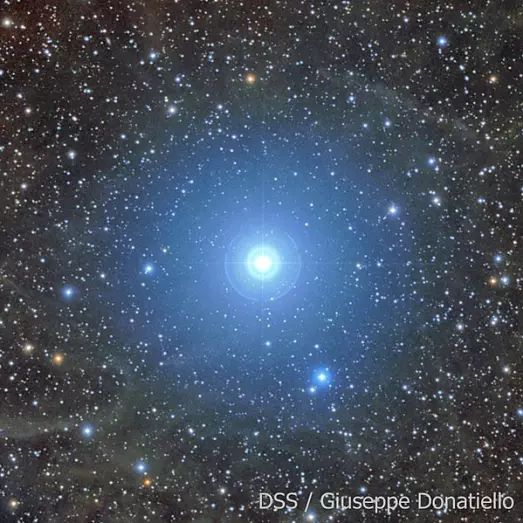RegP wrote: ↑Fri Jan 26, 2024 2:31 pm
Subs were 30s long with around 200 saturated pixels. Also, if you look up other broadband images from this area you'll find many of them also show Ain as blue.
I don't have a scientific explanation as to why it's blue even after color calibration all I know is I didn't mislead, falsify, or enhance the color.
The actual color of Ain is a little yellower than Pollux. It is not deeply orange, but it definitely isn't blue.
I agree with the photographer than the dust around Ain could in fact possibly create a blue cast
in some instances.
Consider the Pole star, Polaris. It's a star of spectral class F8. whose color is quite similar to the Sun. It should photograph as white with perhaps just a hint of yellow, like this:
But there are a lot of pictures where Polaris looks blue, such as this one:
A very interesting portrait of a blue-looking Polaris was
Astronomy Picture of the Day on June 2, 2015. Photographer Rogelio Bernal Andreo brought out a lot of galactic cirrus seen in (more or less) the same part of the sky as Polaris. Even though I don't think that the bluish halo surrounding Polaris in Bernal Andreo's image really looks like a reflection nebula, I still find it intriguing to consider the idea that dust reflection may play a part in creating a (faint) blue hue.
Polaris. Credit: Rogelio Bernal Andreo.
Just like Polaris, Ain really is surrounded by nebulosity:
However, Ain is definitely a redder star than Polaris, and it will be a lot less likely to create a blue reflection nebula. And while the photographer claims that that there are several pictures of Ain where the star looks blue, I myself have found exactly one such picture:
As a Color Commentator, I look carefully at the colors of stars, clusters, nebulas and galaxies in astroimages. I am well aware that there are images where the colors of deep sky objects look strange indeed. What do you think of this portrait of the magenta Pleiades?
And as for Ain, epsilon Tauri, the best color portrait I have found of it is this one:
I think that the above picture makes Ain look a little bit too orange.
Ann
 Epsilon Tauri: Star with Planet
Epsilon Tauri: Star with Planet







